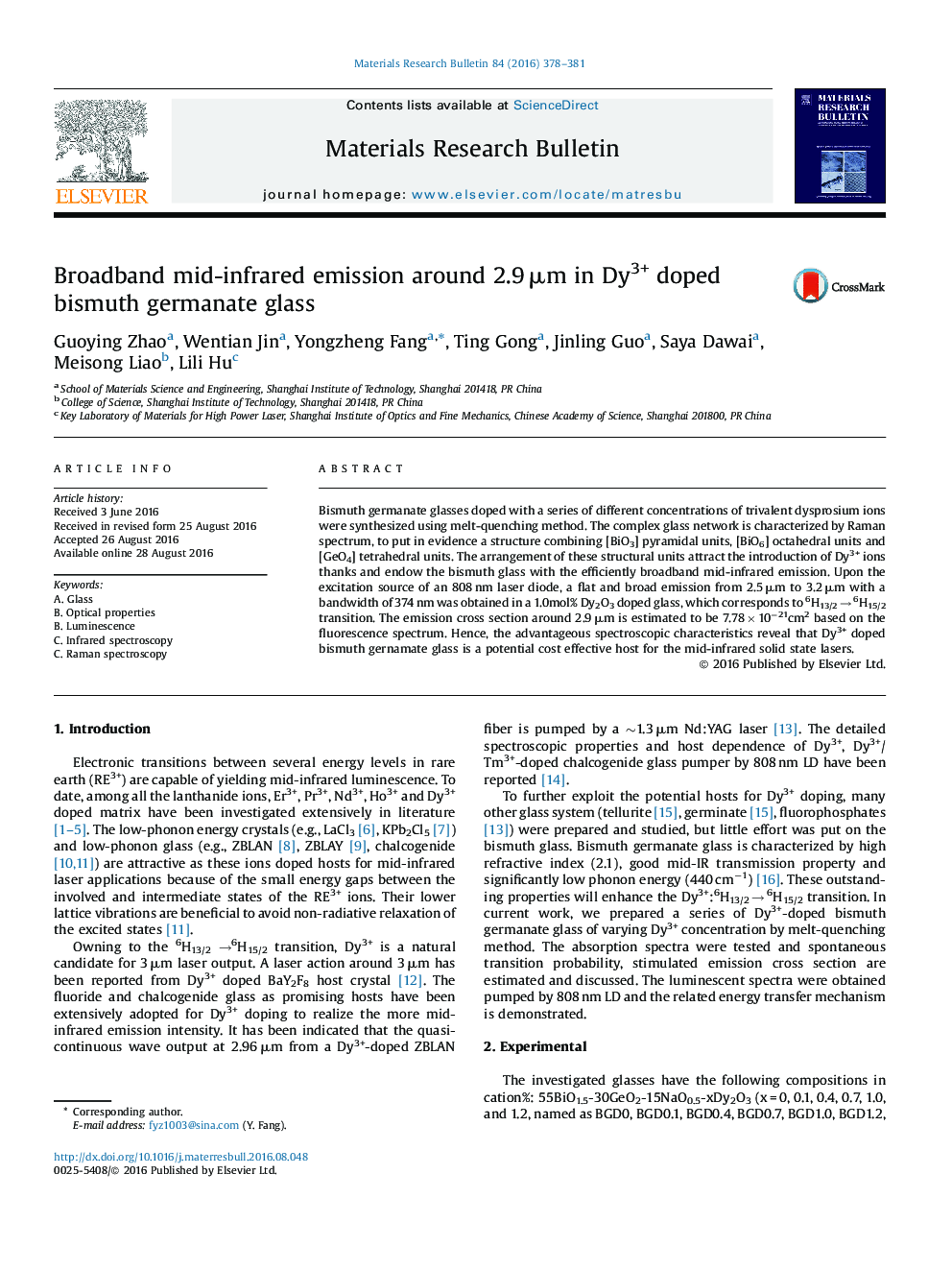| Article ID | Journal | Published Year | Pages | File Type |
|---|---|---|---|---|
| 1486900 | Materials Research Bulletin | 2016 | 4 Pages |
•A series of Dy3+ doped bismuth germanate glass is synthesized.•A flat and broad mid-infrared emission with a bandwidth of 374 nm was obtained in a 1.0mol% Dy2O3 doped glass.•The emission cross section at 2.9 μm reaches 7.78 × 10−21 cm2.•The origins of broadening 2.9 μm emission and energy transfer mechanism are discussed.
Bismuth germanate glasses doped with a series of different concentrations of trivalent dysprosium ions were synthesized using melt-quenching method. The complex glass network is characterized by Raman spectrum, to put in evidence a structure combining [BiO3] pyramidal units, [BiO6] octahedral units and [GeO4] tetrahedral units. The arrangement of these structural units attract the introduction of Dy3+ ions thanks and endow the bismuth glass with the efficiently broadband mid-infrared emission. Upon the excitation source of an 808 nm laser diode, a flat and broad emission from 2.5 μm to 3.2 μm with a bandwidth of 374 nm was obtained in a 1.0mol% Dy2O3 doped glass, which corresponds to 6H13/2 → 6H15/2 transition. The emission cross section around 2.9 μm is estimated to be 7.78 × 10−21cm2 based on the fluorescence spectrum. Hence, the advantageous spectroscopic characteristics reveal that Dy3+ doped bismuth gernamate glass is a potential cost effective host for the mid-infrared solid state lasers.
Graphical abstractFigure optionsDownload full-size imageDownload as PowerPoint slide
